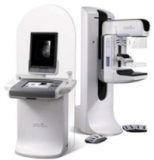Practices Adjust Workflow, IT for Tomosynthesis Adoption
Breast tomosynthesis is finding its way into an increasing number of radiology practices. While 3-D mammography has obvious clinical implications, it's also impacting workflow, particularly if a practice can increase patient volume by introducing the technology.
With the FDA approval of Hologic’s Selenia Dimensions digital breast tomosynthesis system last year, 3-D mammography is finding its way into an increasing number of radiology departments and women’s imaging centers.
And why not? The technology promises marked improvement in clinical performance over conventional mammography. “I saw the advantage of tomosynthesis in being able to find cancers earlier and more often,” said Susan Curry, MD, founder and medical director of the Orlando, Fla.-based Women’s Center for Radiology, which was an early adopter of the technology.
While tomosynthesis has obvious clinical implications, it is bound to have an impact on workflow as well, particularly if a practice can increase patient volume by introducing the technology.
For example, the Women’s Center installed its first tomosynthesis system in April 2011 and is now performing 80 to 100 exams a day with tomo. The practice added a second tomosynthesis unit in July in response to patient demand, and Curry suggested that its popularity has enabled the Women’s Center to maintain patient volume and perhaps even increase it while other practices are struggling to maintain volume.
InHealth Im

aging added tomosynthesis to its Poulsbo, Wash., practice last spring, and, like the Women’s Center, saw it impact patient volume. In InHealth Imaging’s case, the addition of tomosynthesis came at an opportune time: A competing mammography facility had recently opened and had taken away some of InHealth’s business.
“We used tomosynthesis to help market our facility,” said Manfred Henne, MD, PhD, MS, managing member of InHealth Imaging. “And that had two effects. I was able to better brand my facility and drew more patients beyond my typical referral base. And it had a halo effect, meaning that other business increased as well.”
Increasing patient volume can obviously impact workflow. In the case of 3-D mammography, that is mitigated by the reduction in unnecessary callbacks women get from their screening or diagnostic studies.
Mary Hayes, medical director of Memorial Healthcare System Women’s Imaging Centers in Hollywood, Fla., says her center, which started imaging patients with tomosynthesis in September, is in the process of collecting data over a projected six-month period to see how their recall rate has been affected.
“We expect a 30 percent reduction in unnecessary callbacks from screening mammography,” said Hayes. “In other words, if we examine 1,000 patients and expect a 10 percent recall rate on average with 2-D mammography, that would mean a recall of 100 patients. We’re looking to reduce that to just 66 with tomosynthesis, or cut it by one-third, which would be substantial.”
The Women’s Imaging Center performs about 500 tomosynthesis cases a month, said Hayes - 250 on the screening side and 250 on the diagnostic side.
Hayes said the 50/50 split is meant to balance the workflow. The screening exam, while it can result in fewer unnecessary recalls for the patients, does take the radiologist additional time to read the exam because the radiologist has to scroll through the 3-D images, she said.
“But, on the diagnostic side, as physicians become more experienced with tomosynthesis, it may become unnecessary to obtain further views,” Hayes said. “For example, if we’re trying to resolve a lesion we might take additional magnification views, or spot compression views or special projection images. But, if a tomosynthesis image can resolve this issue then we don’t have to send the patient back for all these additional pictures and that can improve our workflow.”
So while tomosynthesis may add some time on the screening side, the reading workflow could be enhanced on the diagnostic side. “For that reason we balance our workflow,” she said.
Practices looking to add tomosynthesis should be mindful of the IT infrastructure implications and the potential impact on workflow, Hayes said. She pointed out that a regular four-view 2-D mammogram takes up to 20 megabytes of compressed storage, while a comparable study done with tomosynthesis would require nearly 10 times as much storage space.
“This is a significant issue, not just for image storage, but for the ability of a PACS team to transmit data in a timely fashion,” Hayes said. “If you’re doing a diagnostic exam you want to have those images accessible in real time, which means you want them in less than two seconds.
“You really should work with your IT people on the front end,” she said. “And it will involve a significant infrastructure investment to do that, and that should not be taken likely.”
GE HealthCare Debuts AI-Powered Cardiac CT Device at ACC Conference
April 1st 2025Featuring enhanced low-dose image quality with motion-free images, the Revolution Vibe CT system reportedly facilitates improved diagnostic clarity for patients with conditions ranging from in-stent restenosis to atrial fibrillation.
The Reading Room Podcast: Current Perspectives on the Updated Appropriate Use Criteria for Brain PET
March 18th 2025In a new podcast, Satoshi Minoshima, M.D., Ph.D., and James Williams, Ph.D., share their insights on the recently updated appropriate use criteria for amyloid PET and tau PET in patients with mild cognitive impairment.
